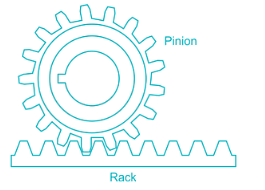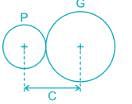Theory of Machines - 2 - Mechanical Engineering MCQ
20 Questions MCQ Test SSC JE Mechanical Mock Test Series 2025 - Theory of Machines - 2
| 1 Crore+ students have signed up on EduRev. Have you? Download the App |
Which of the following mechanisms are examples of force closed kinematic Pairs?
A. Cam and roller mechanism
B. Door-closing mechanism
C. Slider-crank mechanism
The graph of turning moment diagram is drawn between ________.
For a vibrating system, if the damping factor is unity, then the system is ________ damped.
Gyroscopic effect is not observed in which of the following actions performed by the ships?
What is the condition of complete balancing of reciprocating parts of an engine?
The Interference or undercutting in involute gears can be avoided by:-
If a more stiff spring is used in Hartnell governor, then the governor will be ________.
Which one of the following laws is not applicable for a simple pendulum?
If C1 is the coefficient of speed fluctuation of a flywheel then the ratio of  will be
will be
A gear set consists of a 16-tooth pinion driving a 40-tooth gear. The module is 12 mm. The addendum and dedendum are 12 mm and 15 mm, respectively and the gears are cut using 20° pressure angle. The centre distance is
A crank of radius 15 cm is rotating at 50 rpm with an angular acceleration of 60 rad/sec2. The tangential acceleration of the crank is about
The kinetic energy of a flywheel, having moment of inertia I and angular speed ‘ω’, is given by
The number of instantaneous centres of rotation in a slider-crank quick-return mechanism is
What will be the locus of a point on a thread unwound from a cylinder?
|
3 videos|1 docs|55 tests
|
|
3 videos|1 docs|55 tests
|


















 then ϵ = 1 for all values of damping factor c/cc.
then ϵ = 1 for all values of damping factor c/cc.









